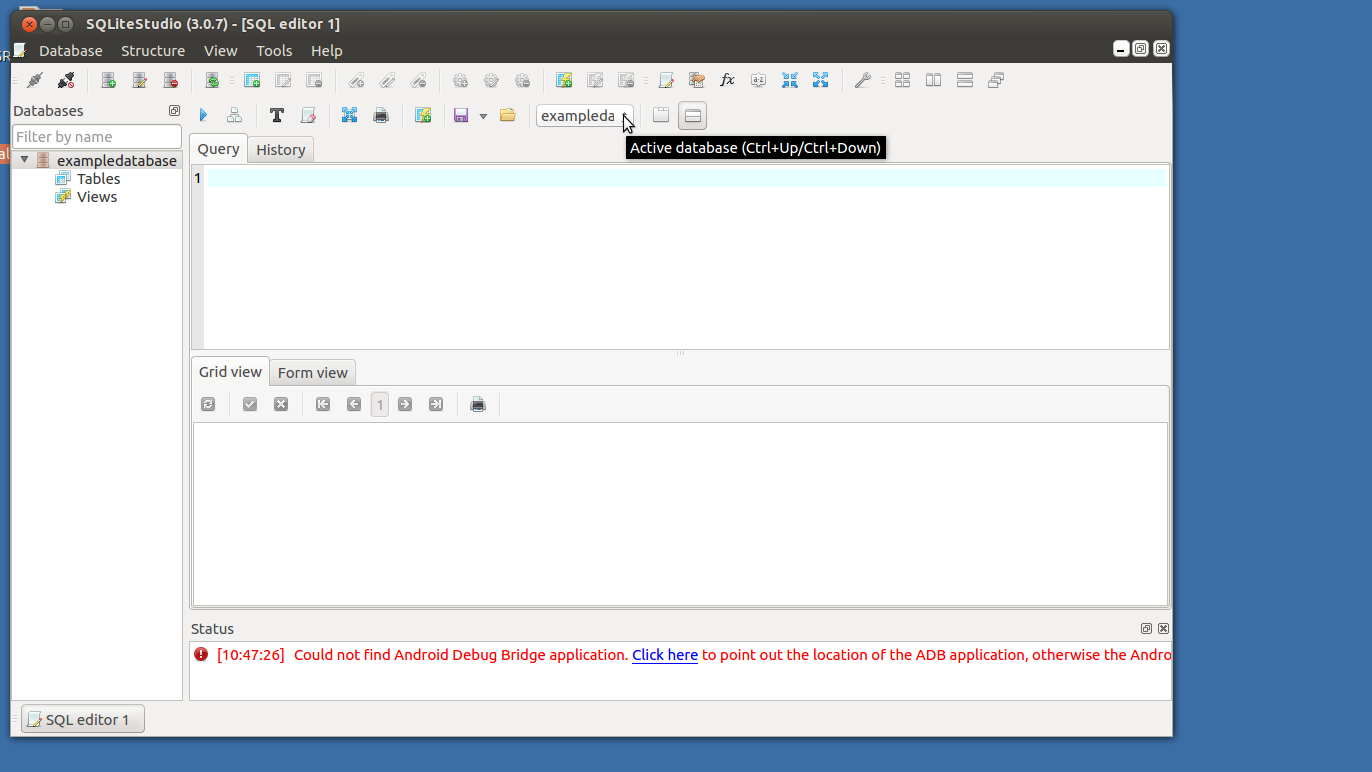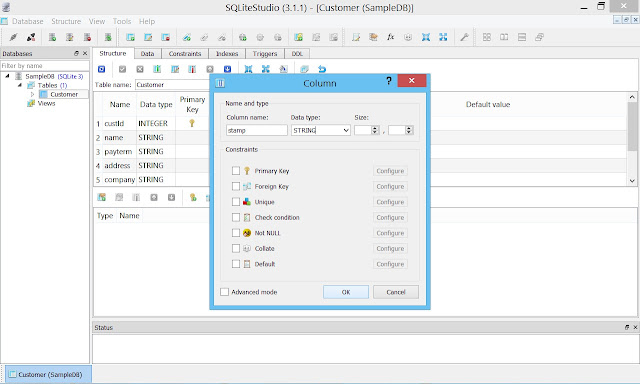

Ī NATURAL JOIN is similar to a JOIN.USING, only it automatically tests for equality between the values of every column that exists in both tables − This expression specifies a list of one or more columns. To avoid redundancy and keep the phrasing shorter, INNER JOIN conditions can be declared with a USING expression. FROM table1 JOIN table2 ON conditional_expression. When the join-predicate is satisfied, the column values for each matched pair of rows of A and B are combined into a result row.Īn INNER JOIN is the most common and default type of join.

The query compares each row of table1 with each row of table2 to find all pairs of rows which satisfy the join-predicate. INNER JOIN creates a new result table by combining column values of two tables (table1 and table2) based upon the join-predicate. The above query will produce the following result − Sqlite> SELECT EMP_ID, NAME, DEPT FROM COMPANY CROSS JOIN DEPARTMENT īased on the above tables, you can write a CROSS JOIN as follows − Because CROSS JOINs have the potential to generate extremely large tables, care must be taken to only use them when appropriate. If the input tables have x and y row, respectively, the resulting table will have x*y row. INSERT INTO DEPARTMENT (ID, DEPT, EMP_ID)įinally, we have the following list of records available in DEPARTMENT table −ĬROSS JOIN matches every row of the first table with every row of the second table. Here is the list of INSERT statements to populate DEPARTMENT table − So just let's assume the list of records available in COMPANY table −Īnother table is DEPARTMENT with the following definition − We already have seen INSERT statements to populate COMPANY table. A JOIN is a means for combining fields from two tables by using values common to each.īefore we proceed, let's consider two tables COMPANY and DEPARTMENT. WHERE EXISTS (SELECT AGE FROM COMPANY WHERE SALARY > 65000) įollowing SELECT statement makes use of SQL sub-query where sub-query finds all the records with AGE field having SALARY > 65000 and later WHERE clause is being used along with > operator to list down all the records where AGE from the outside query is greater than the age in the result returned by the sub-query.SQLite Joins clause is used to combine records from two or more tables in a database. Sqlite> SELECT * FROM COMPANY WHERE AGE BETWEEN 25 AND 27 įollowing SELECT statement makes use of SQL sub-query, where sub-query finds all the records with AGE field having SALARY > 65000 and later WHERE clause is being used along with EXISTS operator to list down all the records where AGE from the outside query exists in the result returned by the sub-query − Sqlite> SELECT * FROM COMPANY WHERE AGE NOT IN ( 25, 27 ) įollowing SELECT statement lists down all the records where AGE value is in BETWEEN 25 AND 27. Sqlite> SELECT * FROM COMPANY WHERE AGE IN ( 25, 27 ) įollowing SELECT statement lists down all the records where AGE value is neither 25 nor 27. Sqlite> SELECT * FROM COMPANY WHERE NAME GLOB 'Ki*' įollowing SELECT statement lists down all the records where AGE value is either 25 or 27. Sqlite> SELECT * FROM COMPANY WHERE NAME LIKE 'Ki%' Sqlite> SELECT * FROM COMPANY WHERE AGE IS NOT NULL įollowing SELECT statement lists down all the records where NAME starts with 'Ki', does not matter what comes after 'Ki'. Sqlite> SELECT * FROM COMPANY WHERE AGE >= 25 OR SALARY >= 65000 įollowing SELECT statement lists down all the records where AGE is not NULL, which means all the records because none of the record has AGE equal to NULL. You can specify a condition using Comparision or Logical Operators such as >, SELECT * FROM COMPANY WHERE AGE >= 25 AND SALARY >= 65000 įollowing SELECT statement lists down all the records where AGE is greater than or equal to 25 OR salary is greater than or equal to 65000.00. Syntaxįollowing is the basic syntax of SQLite SELECT statement with WHERE clause. The WHERE clause not only is used in SELECT statement, but it is also used in UPDATE, DELETE statement, etc., which will be covered in subsequent chapters. You will have to use WHERE clause to filter the records and fetching only necessary records. If the given condition is satisfied, means true, then it returns the specific value from the table. SQLite WHERE clause is used to specify a condition while fetching the data from one table or multiple tables.


 0 kommentar(er)
0 kommentar(er)
